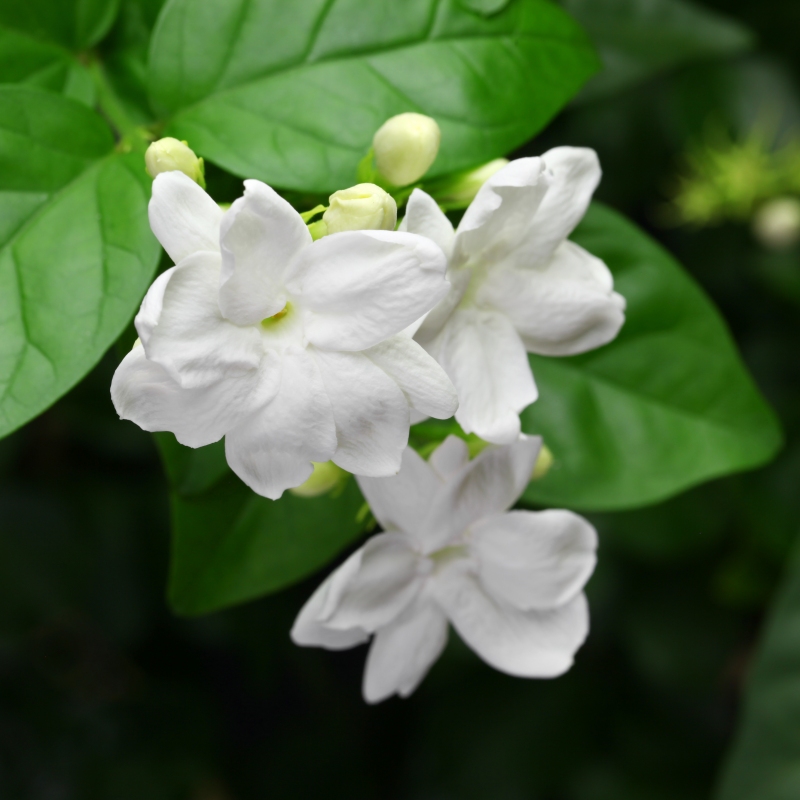





Jasmine Sambac 'Arabian' - Indoor Plant
Jasminium sambac Sambac Jasmine
89 reviews
Jasmine Sambac 'Arabian' - Indoor Plant
Jasminium sambac Sambac Jasmine
89 reviews
- Produces highly fragrant flowers that fill the room with a delightful scent
- Easy to care for and thrives in outdoor and indoor environments
- Beautiful, delicate white flowers that bloom prolifically
- Recommended by landscape designers for optimal fit in real yards
$76.00
$109.00
30% Off
- Ships to in 3-5 Days
- Free Shipping Over $150
- Plant Arrival Guarantee
- In Stock
- Free Plant Consult
$200 - Landscape-Approved: Every Plant We Sell Comes With Design Expertise Behind It
2.5 Qt.
We are sorry, product is currently out of stock due to seasonal availability. Please check the "Related plants available in your area" section below
Not just beautiful - intentionally selected by ShrubHub's 3D landscape design team to fit real-world spaces and maximize yard potential.
Why Jasmine Sambac 'Arabian' - Indoor Plant?
Jasmine Sambac 'Arabian' is a popular plant known for its fragrant and delicate white flowers. This variety of jasmine is well-suited for outdoor and indoor growing due to its compact size and ability to thrive in outdoor landscapes and container gardens. Its intoxicating scent and beautiful blooms make it a favorite choice for adding natural beauty and aroma to any space.
Sunlight
Jasmine Sambac 'Arabian' plants require bright, indirect sunlight. They should be placed in a location where they can receive at least 4-6 hours of sunlight each day. It is important to avoid direct sunlight, as it can cause the leaves to burn.
Watering
Jasmine Sambac 'Arabian' requires regular watering to keep the soil consistently moist, but not waterlogged. It is important to allow the top inch of soil to dry out between waterings.
Fertilizing
Jasmine Sambac 'Arabian' plants require a balanced fertilizer with a higher potassium content to promote flowering. Use a liquid fertilizer diluted to half strength every 2-4 weeks during the growing season. Avoid over-fertilizing.
Jasmine Sambac 'Arabian' - (Jasminum sambac)
The Jasmine Sambac 'Arabian' is a specific cultivar of the Jasmine Sambac (Jasminum sambac), also known as Arabian Jasmine. This cultivar is particularly noted for its distinctive qualities and is often prized for its strong, sweet fragrance.
Key Features:
- Fragrant white flowers: The Jasmine Sambac 'Arabian' produces delicate white flowers that have a sweet, intoxicating fragrance.
- Glossy dark green leaves: The plant features shiny, dark green leaves that add to its overall appeal.
- Growth Habit: It typically grows as a shrub or vine, and it can be trained to climb or spread. In tropical and subtropical climates, it can thrive as an outdoor plant, while in cooler areas, it is often grown indoors or in containers.
- Uses: Beyond its ornamental value, the flowers of Jasmine Sambac 'Arabian' are used in making jasmine tea and in traditional medicine. They are also a key ingredient in high-end perfumes due to their strong, sweet fragrance.
Plant Information:
| Botanical Name: | Jasminium sambac Sambac Jasmine |
| USDA Zones: | 9 - 11 |
| Mature Height: | 5 ft |



Pollination Info
Pollination for Jasmine Sambac 'Arabian' (Jasminum sambac) is a key factor in the plant’s ability to produce fruit and seeds, although it is primarily grown for its ornamental value and fragrance rather than for its fruit.
Pollination Overview
-
Pollination Type:
- Jasmine Sambac flowers are typically pollinated by insects, such as bees and butterflies. They are self-pollinating, meaning that each flower can pollinate itself without needing pollen from another flower.
-
Flower Structure:
- The flowers of Jasmine Sambac have both male (stamens) and female (pistil) parts, allowing them to self-pollinate. The pollen from the stamens can transfer to the pistil within the same flower.
-
Pollinators:
- Insects: Bees and butterflies are the primary pollinators for Jasmine Sambac. They are attracted to the plant’s fragrant flowers.
- Humans: In a garden setting, you might enhance pollination by gently brushing the flowers with a soft brush or by encouraging natural pollinators to visit your garden.
-
Fruit and Seeds:
- While Jasmine Sambac can produce small, green berries after successful pollination, it is usually grown for its flowers rather than for seed production. The fruit is not commonly harvested or used.
-
Encouraging Pollination:
- Plant Diversity: Growing other flowering plants nearby can attract more pollinators to your garden.
- Avoid Pesticides: Minimizing the use of pesticides helps protect pollinators and encourages a healthy ecosystem around your Jasmine Sambac.
-
Indoor Pollination:
- If growing Jasmine Sambac indoors, you might need to hand-pollinate the flowers to ensure successful pollination. Gently use a small brush or cotton swab to transfer pollen from one flower to another.
In summary, Jasmine Sambac 'Arabian' is primarily self-pollinating and can benefit from natural pollinators. Proper care and encouragement of pollinators can help ensure the plant remains healthy and productive.
FAQ
Check Out These Verified Customer Reviews:
Customer Reviews
4.7 out of 5 based on 89 reviews
Thank you! Your review has been submitted.
Lovely addition to my garden
The Sambac Jasmine plant arrived in perfect condition and was even more beautiful in person. The fragrance is intoxicating and the plant is thriving in my garden. Highly recommend!
I ordered the Sambac Jasmine plant from the website and was very pleased with the overall experience. The plant arrived well-packaged and healthy. The customer service was also excellent. Will definitely be a returning customer.
Item has been added to your cart.


